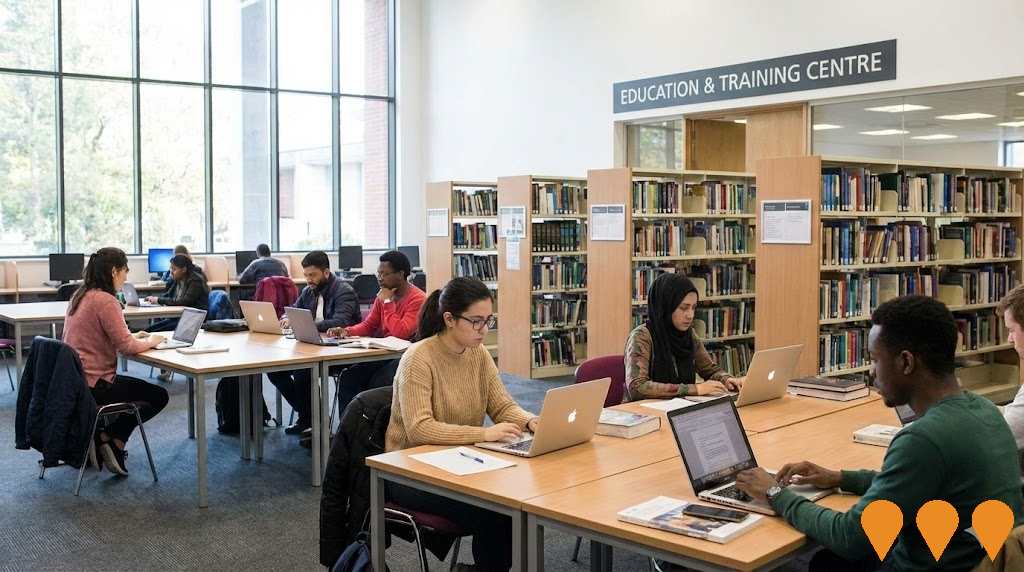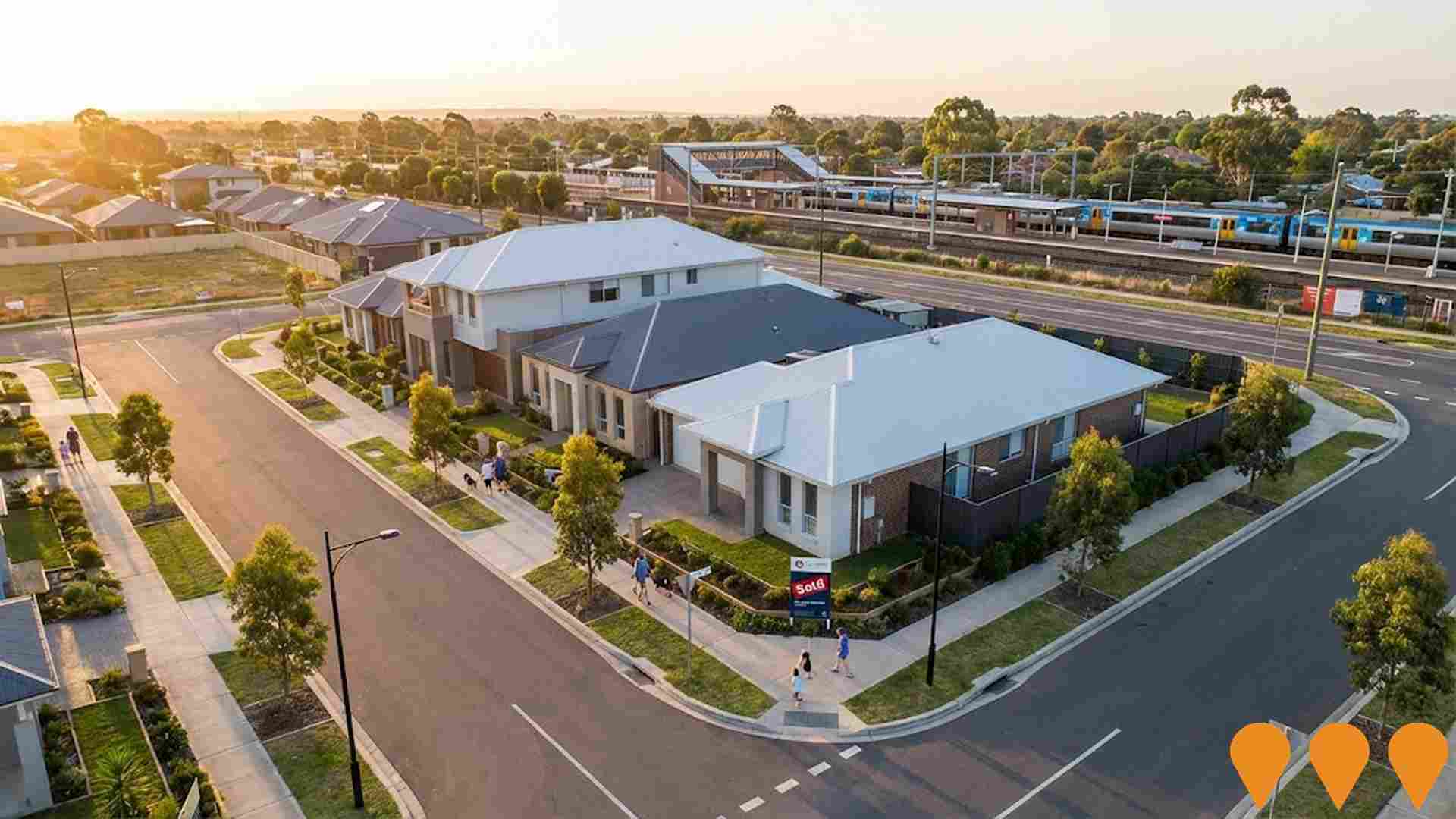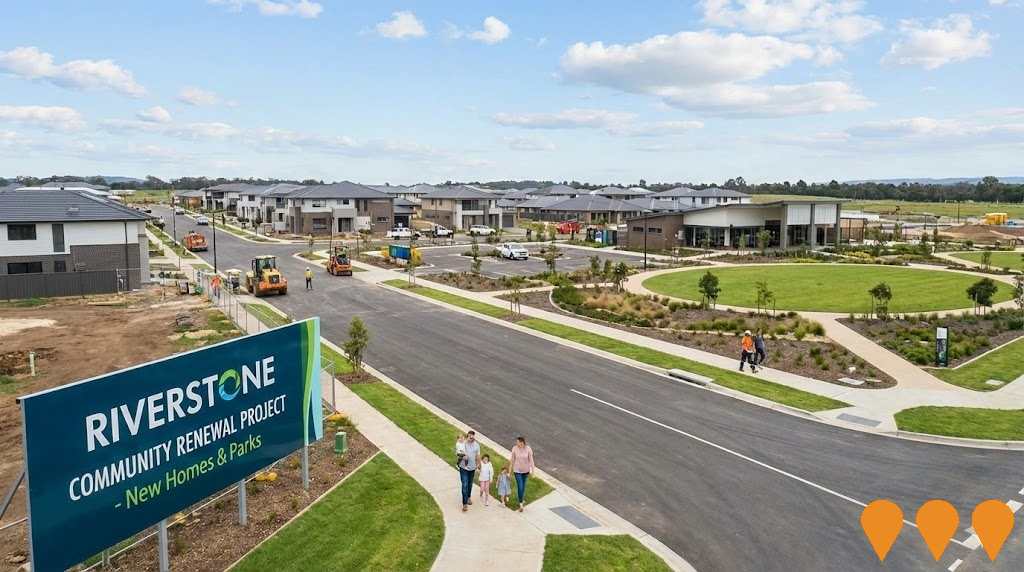Chart Color Schemes
est. as @ -- *
ABS ERP | -- people | --
2021 Census | -- people
Sales Activity
Curious about local property values? Filter the chart to assess the volume and appreciation (including resales) trends and regional comparisons, or scroll to the map below view this information at an individual property level.
Find a Recent Sale
Sales Detail
Population
Population growth drivers in Fairfield - East are strong compared to national averages based on AreaSearch's ranking of recent, and medium to long-term trends
Fairfield - East's population is 16,232 as of August 2025. This figure reflects a growth of 490 people since the 2021 Census, which reported a population of 15,742. The increase is inferred from ABS' estimated resident population of 16,229 in June 2024 and an additional 208 validated new addresses after the Census date. This results in a population density ratio of 2,842 persons per square kilometer, placing Fairfield - East in the upper quartile nationally according to AreaSearch's assessments. Overseas migration contributed approximately 94.9% of overall population gains recently.
AreaSearch uses ABS/Geoscience Australia projections for each SA2 area, released in 2024 with a base year of 2022. For areas not covered by this data, NSW State Government's SA2 level projections are used, released in 2022 with a base year of 2021. Growth rates by age group from these aggregations are applied to all areas for years 2032 to 2041. Future population trends indicate a significant increase is forecasted, with the area expected to expand by 5,772 persons to 2041 based on current numbers, marking an overall increase of 35.4% over the 17 years.
Frequently Asked Questions - Population
Development
Residential development activity is lower than average in Fairfield - East according to AreaSearch's national comparison of local real estate markets
Fairfield - East has received approximately 59 dwelling approvals annually over the past five financial years, totalling 297 homes. In FY-26 so far, 127 approvals have been recorded. Despite population decline during this period, development activity has been adequate relative to population changes, benefiting buyers with more affordable housing options, as new homes are being built at an average expected construction cost of $302,000, below regional norms. This financial year has seen $19.1 million in commercial approvals, indicating moderate levels of commercial development.
Compared to Greater Sydney, Fairfield - East has roughly half the rate of new dwelling approvals per person and ranks among the 46th percentile nationally, which may constrain buyer choices and support interest in existing homes. The area's building activity comprises 75.0% detached houses and 25.0% attached dwellings, preserving its suburban nature and attracting space-seeking buyers. With around 373 people per dwelling approval, Fairfield - East shows a developed market.
Population forecasts indicate an increase of 5,746 residents by 2041. If current construction levels persist, housing supply may lag population growth, potentially intensifying buyer competition and driving price increases.
Frequently Asked Questions - Development
Infrastructure
Fairfield - East has very high levels of nearby infrastructure activity, ranking in the top 10% nationally
AreaSearch has identified 29 infrastructure projects that could impact the area. Significant ones include: Villawood East Masterplan Precinct (Lansvale & Lansdowne), Woodville Gardens Estate, Villawood Town Centre Redevelopment at Kinara Place, and Fairfield Chase Shopping Centre Expansion. The following list details those most likely to be relevant.
Professional plan users can use the search below to filter and access additional projects.
INFRASTRUCTURE SEARCH
 Denotes AI-based impression for illustrative purposes only, not to be taken as definitive under any circumstances. Please follow links and conduct other investigations from the project's source for actual imagery. Developers and project owners wishing us to use original imagery please Contact Us and we will do so.
Denotes AI-based impression for illustrative purposes only, not to be taken as definitive under any circumstances. Please follow links and conduct other investigations from the project's source for actual imagery. Developers and project owners wishing us to use original imagery please Contact Us and we will do so.
Frequently Asked Questions - Infrastructure
Fairfield Forum Redevelopment
Comprehensive mixed-use renewal of the Fairfield Forum site delivering up to approx. 1,489 dwellings, ~18,000 sqm retail/commercial space, a new market square, ~4,000 mý public park (Cunninghame Street Park), new public road, upgraded streets and multiple pedestrian links to reinvigorate Fairfield town centre. Rezoning via LEP Amendment No. 36 and Planning Agreement executed March 2022 are in place.
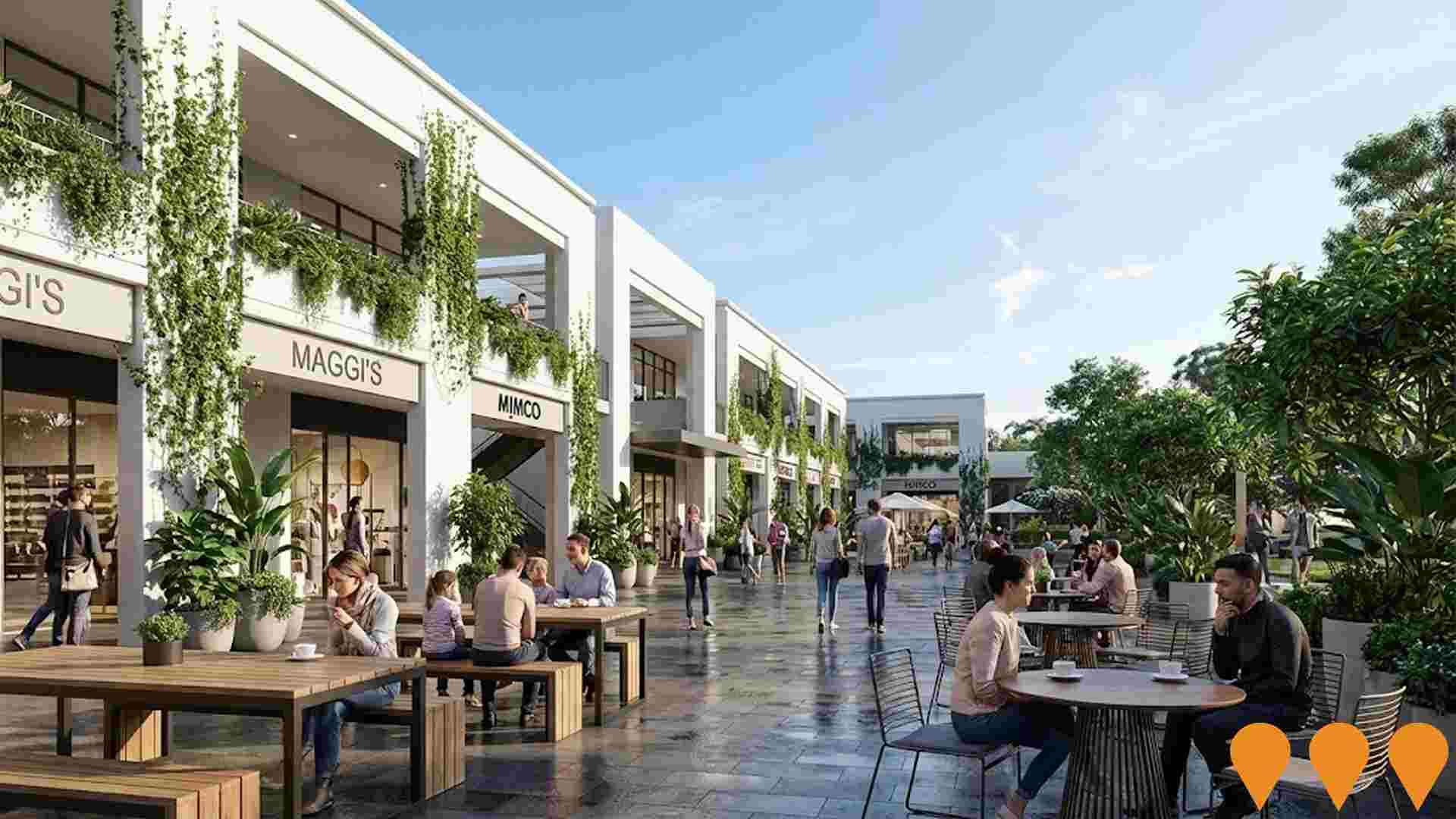
Fairfield Chase Shopping Centre Expansion
Major expansion and refurbishment of Fairfield Chase Shopping Centre including addition of approximately 4,500 sqm of new retail floor space, new loading dock, upgraded car parking, improved pedestrian links and associated site works.
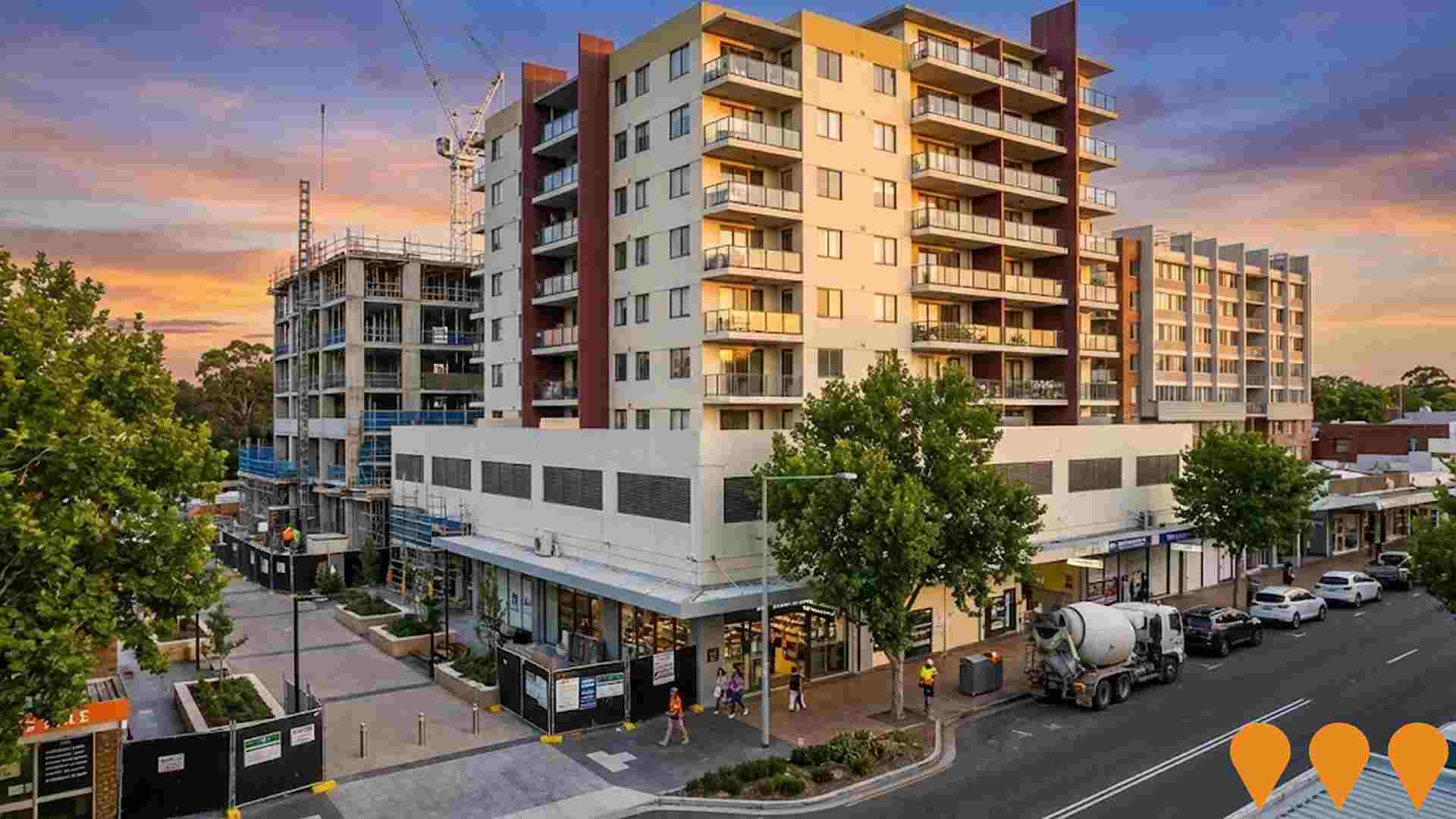
Chester Square Redevelopment
Mixed-use urban renewal of Chester Square shopping centre by Holdmark Property Group. Planning proposal seeks amendment to Canterbury-Bankstown LEP to enable up to 515 dwellings across six buildings with heights up to 60m (18 storeys) and FSR of 4:1. Development includes approximately 12,400sqm of retail space, 8,300sqm of employment space, a new public plaza of about 2,800sqm and at least 2,000sqm of indoor community space. Mandates 5% affordable housing requirement. Urban design by SJB Architects and Turner. Planning proposal exhibited in mid-2025 and currently post-exhibition under assessment.
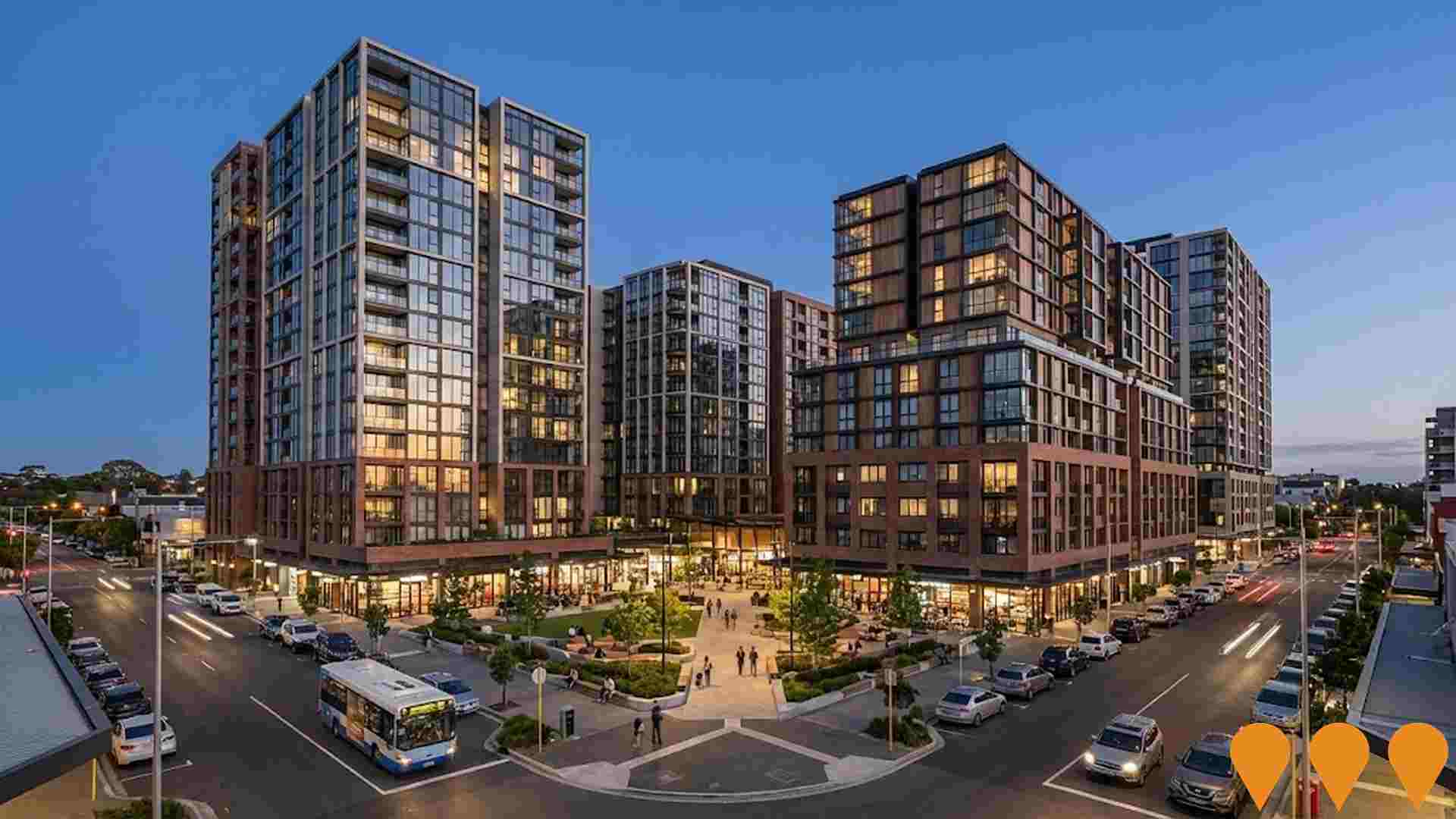
Villawood Town Centre Redevelopment (Kinara Place)
Major town centre urban renewal project in partnership with NSW Land and Housing Corporation and Traders in Purple, delivering approximately 400 new homes, including 55 social dwellings. The project is mixed-use, delivering a 3,000 sqm park, retail spaces (including a supermarket), a child care facility, a medical centre, and community facilities. Stage 1 (approved) is a 10-storey tower with 112 apartments. The overall project is part of the NSW Government's Future Directions for Social Housing redevelopment project.
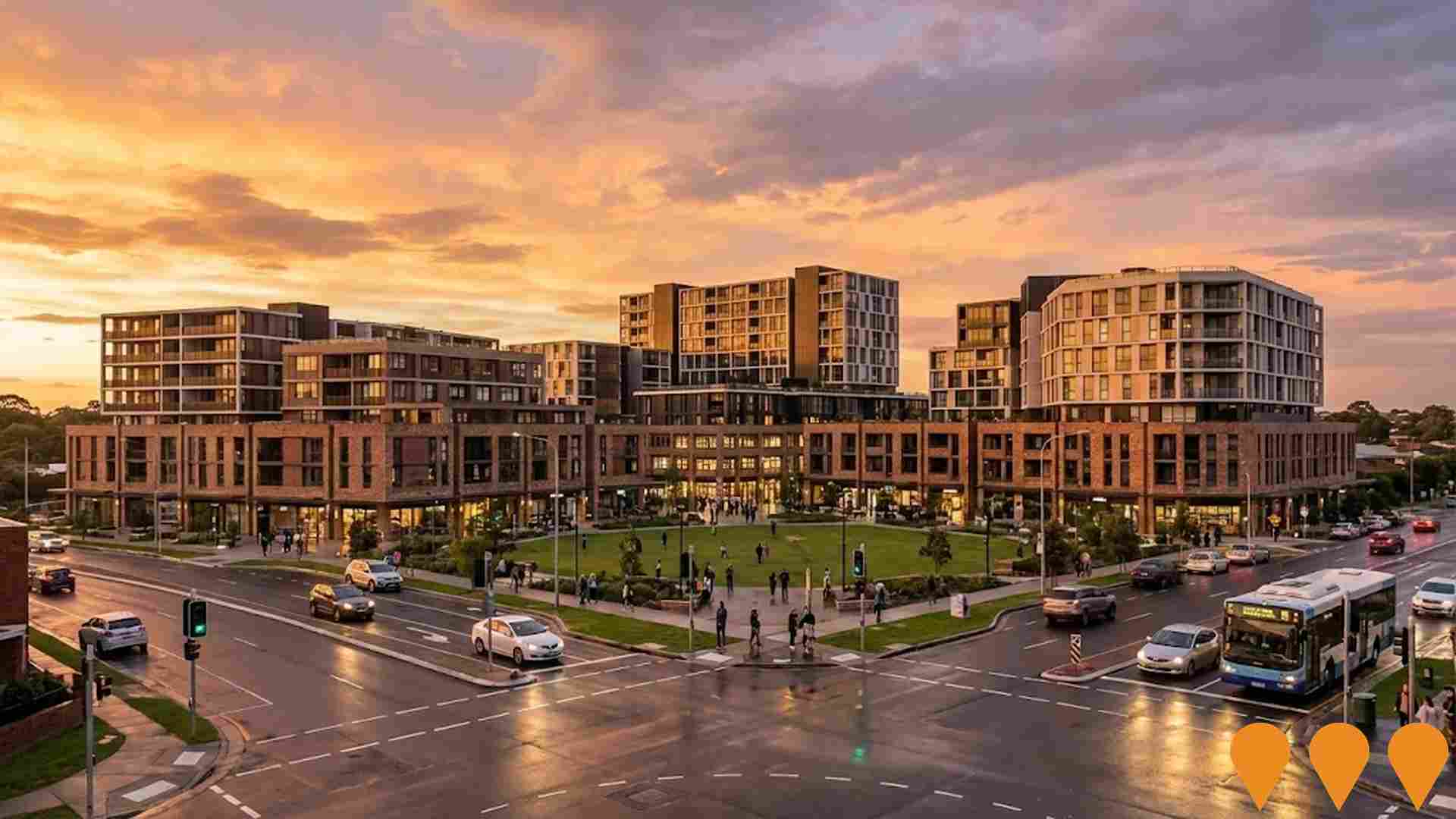
Villawood East Masterplan Precinct (Lansvale & Lansdowne)
Large-scale masterplanned community by Mirvac delivering approximately 1,200 new homes including apartments, townhouses and detached dwellings, plus new parks, retail and community facilities in the Villawood East precinct.
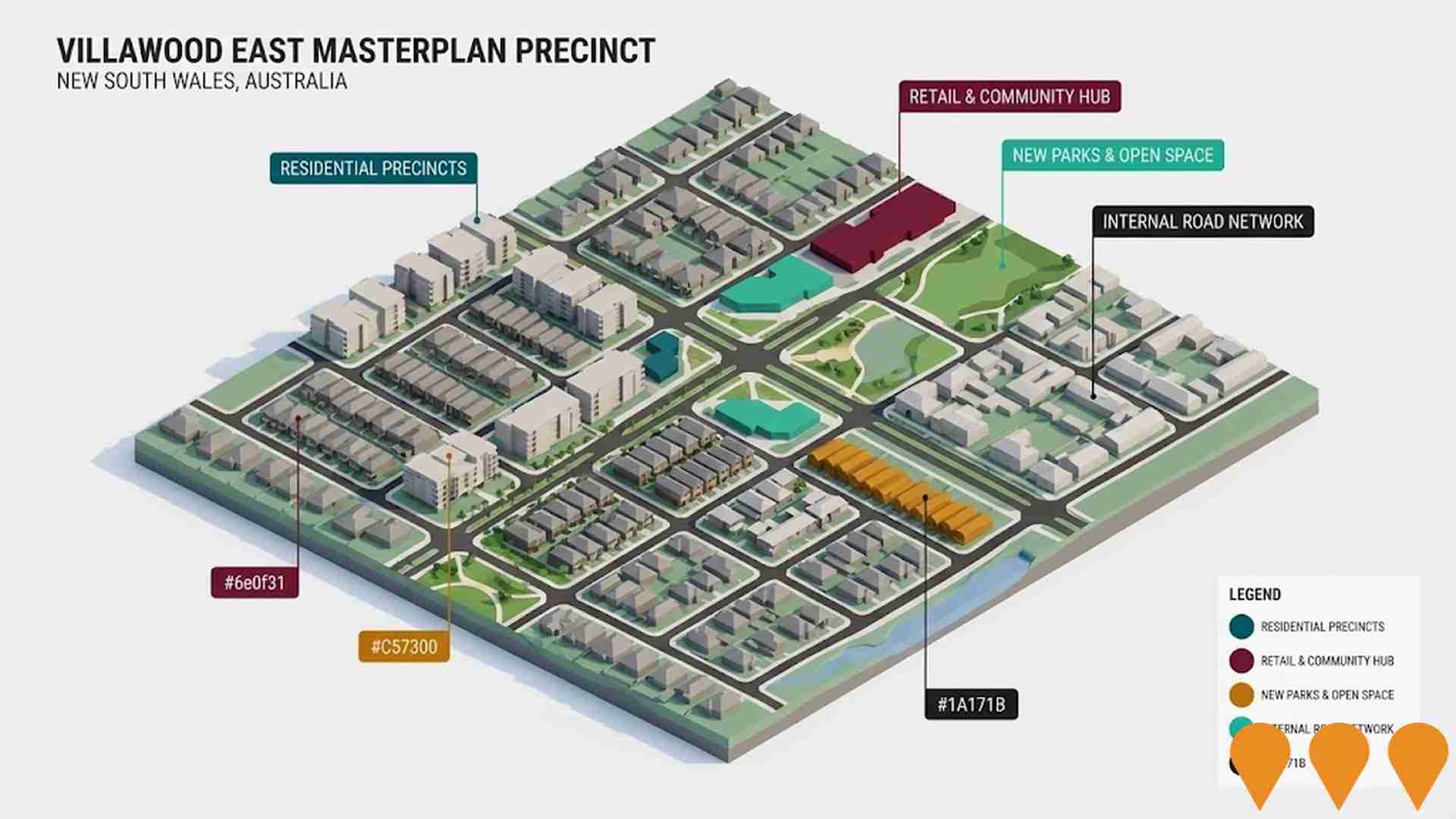
Villawood Place Mixed-Use Precinct (Stage 3 Expansion)
Next stage of Villawood town centre renewal including additional medium-density housing, expanded retail offerings and public domain upgrades around the new civic plaza.
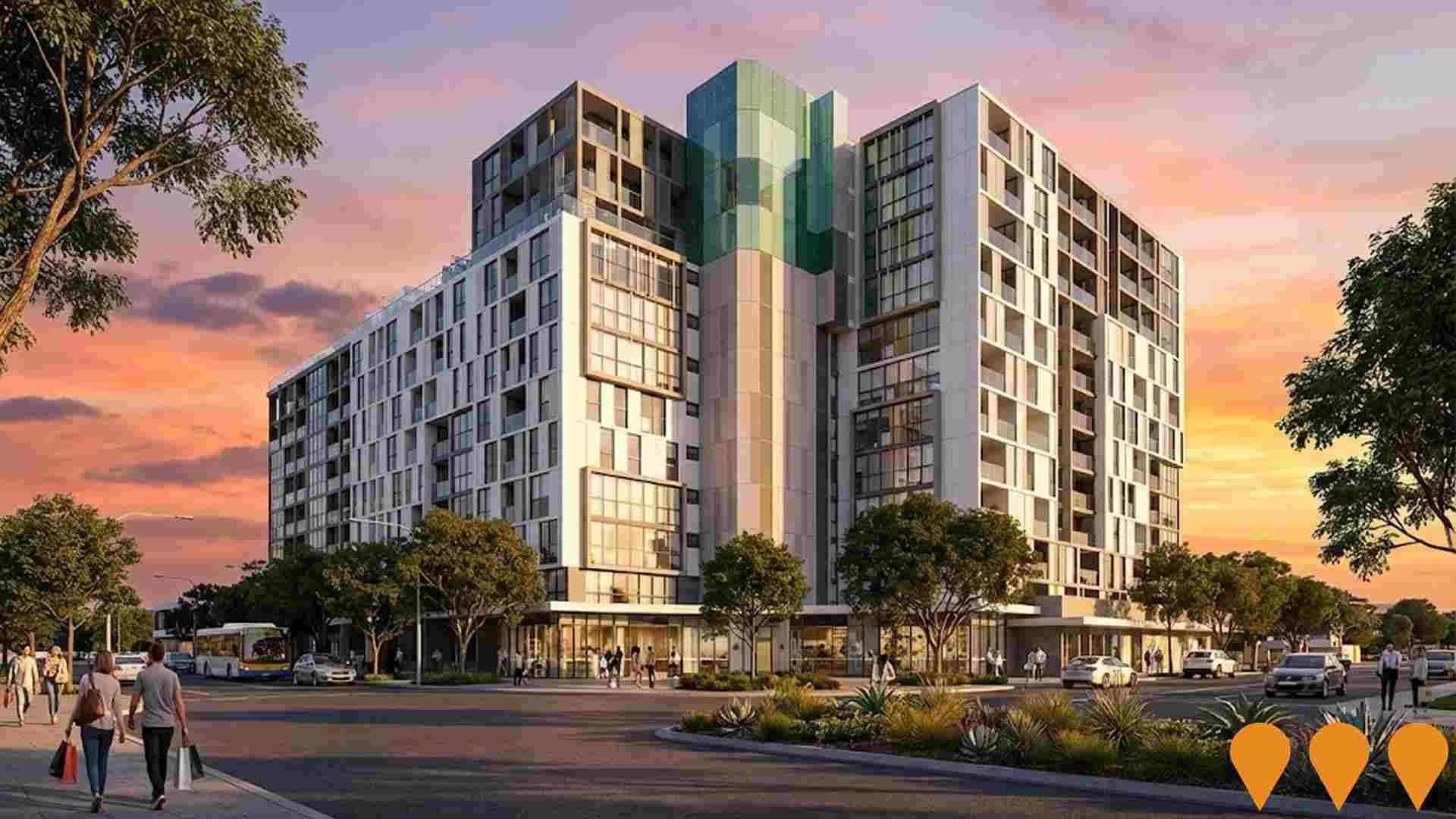
The Foundry Villawood
Completed mixed-use development by Deicorp featuring 228 apartments over three buildings with ground-floor retail and a childcare centre. The project was completed in 2024.
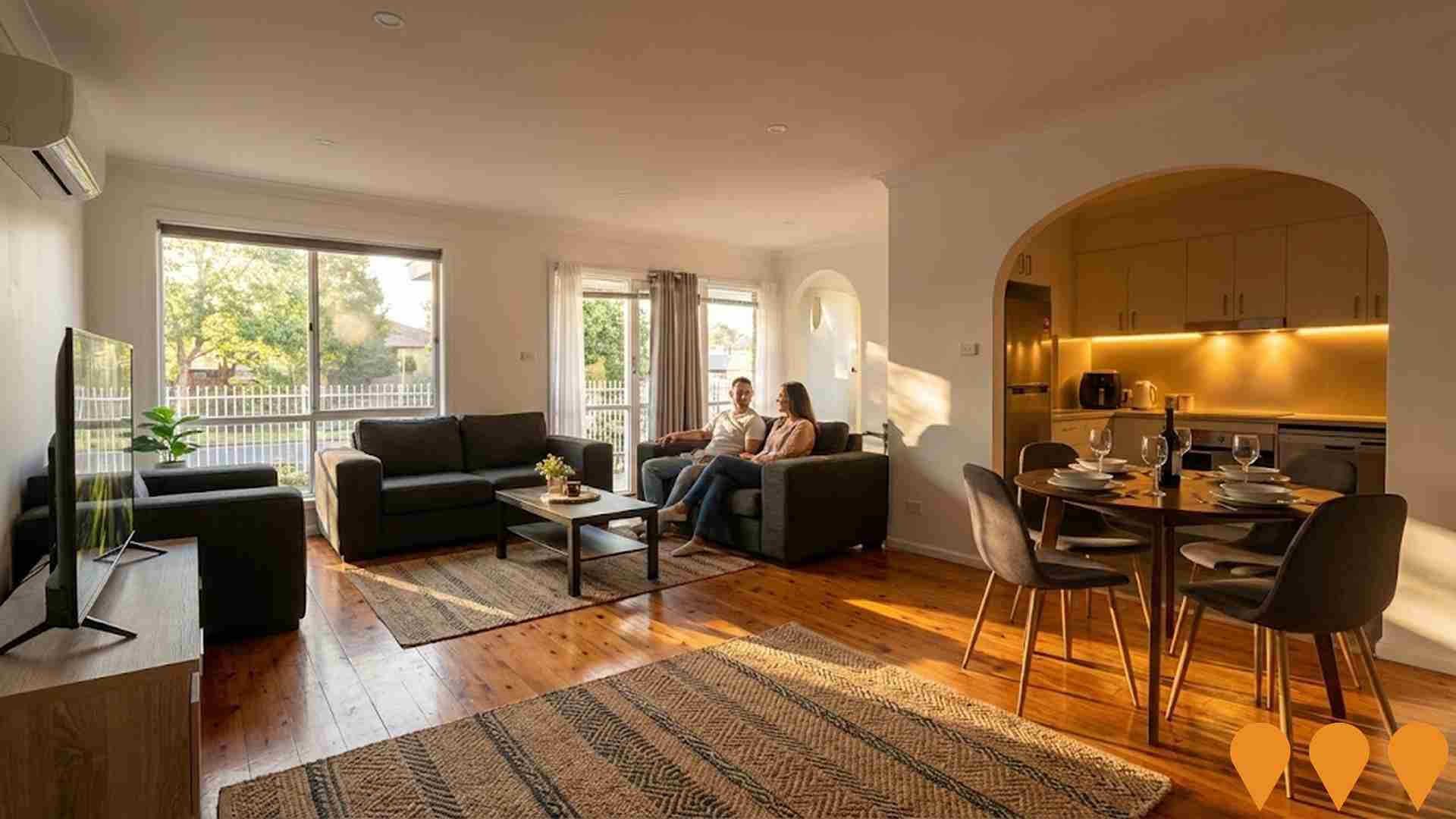
Chester Hill Station Upgrade
Comprehensive station upgrade including new lift, stairs, elevated walkway connecting Chester Hill Road to platform, accessible parking and kiss-and-ride spaces, additional bike parking, upgraded bus stops, new accessible toilets, platform levelling, tactile indicators, and placemaking enhancements. Part of Safe Accessible Transport program delivered by Gartner Rose.
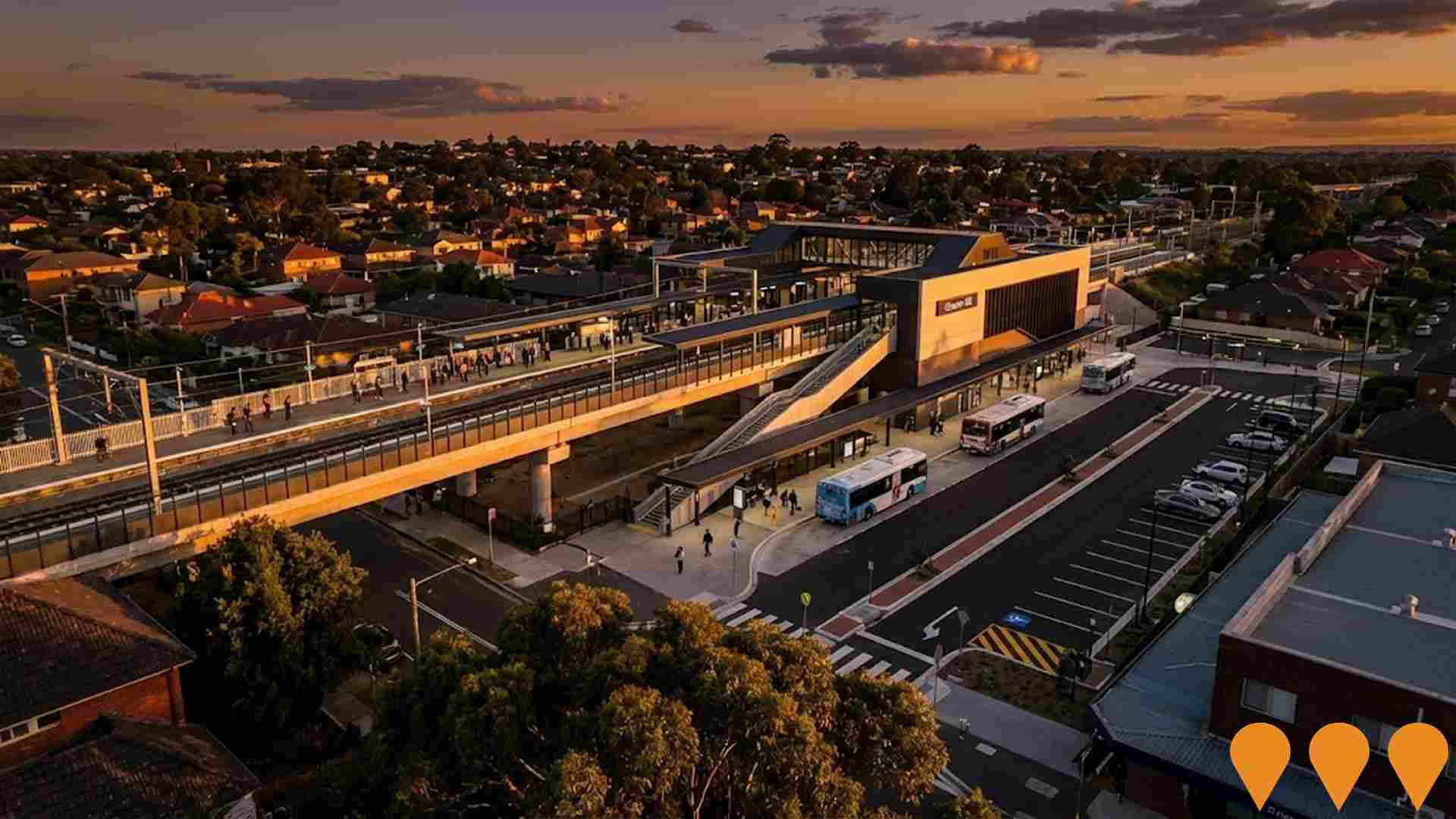
Employment
Employment conditions in Fairfield - East face significant challenges, ranking among the bottom 10% of areas assessed nationally
Fairfield - East has an unemployment rate of 16.5%. As of June 2025, it stands at 12.3% above Greater Sydney's rate of 4.2%.
Workforce participation is significantly lower at 37.3%, compared to Greater Sydney's 60.0%. Major employment industries include health care & social assistance, manufacturing, and retail trade. Manufacturing has a particularly notable concentration with employment levels at 2.1 times the regional average. Professional & technical services have limited presence at 5.8% compared to the regional average of 11.5%.
Over the year to June 2025, labour force levels increased by 3.1%, but employment declined by 2.0%, resulting in a rise in unemployment rate by 4.4 percentage points. In contrast, Greater Sydney saw employment growth of 2.6% and an increase in unemployment by only 0.3 percentage points. National employment forecasts from Jobs and Skills Australia (May 2025) project national growth of 6.6% over five years and 13.7% over ten years. Applying these projections to Fairfield - East's employment mix suggests local growth of approximately 6.1% over five years and 13.0% over ten years.
Frequently Asked Questions - Employment
Income
Income metrics place the area in the bottom 10% of locations nationally according to AreaSearch analysis
AreaSearch's latest postcode level ATO data for financial year 2022 shows that income in Fairfield - East is below the national average. The median assessed income is $39,645 and the average income stands at $48,073. In contrast, Greater Sydney has a median income of $56,994 and an average income of $80,856. Based on Wage Price Index growth of 12.61% since financial year 2022, current estimates for Fairfield - East would be approximately $44,644 (median) and $54,135 (average) as of September 2025. The 2021 Census reveals that household, family, and personal incomes in Fairfield - East all fall between the 3rd and 12th percentiles nationally. The earnings profile indicates that the largest segment comprises 27.6% earning $1,500 - $2,999 weekly (4,480 residents), which is consistent with broader trends across the region showing 30.9% in the same category. Housing affordability pressures are severe, with only 78.2% of income remaining after housing costs, ranking at the 9th percentile nationally.
Frequently Asked Questions - Income
Housing
Fairfield - East displays a diverse mix of dwelling types, with a higher proportion of rental properties than the broader region
Fairfield - East's dwelling structures, as per the latest Census, were 64.9% houses and 35.1% other dwellings (semi-detached, apartments, 'other' dwellings). This compares to Sydney metro's 62.1% houses and 37.8% other dwellings. Home ownership in Fairfield - East was 25.8%, similar to Sydney metro. Mortgaged dwellings were 28.2% and rented ones 46.0%. The median monthly mortgage repayment was $1,850, below Sydney metro's average of $2,167. Median weekly rent in Fairfield - East was $300, compared to Sydney metro's $400. Nationally, Fairfield - East's mortgage repayments were lower than the Australian average of $1,863, and rents were substantially below the national figure of $375.
Frequently Asked Questions - Housing
Household Composition
Fairfield - East has a typical household mix, with a lower-than-average median household size
Family households account for 70.8% of all households, including 36.4% couples with children, 16.2% couples without children, and 16.6% single parent families. Non-family households make up the remaining 29.2%, with lone person households at 25.8% and group households comprising 3.3% of the total. The median household size is 3.0 people, which is smaller than the Greater Sydney average of 3.1.
Frequently Asked Questions - Households
Local Schools & Education
Fairfield - East faces educational challenges, with performance metrics placing it in the bottom quartile of areas assessed nationally
The area's university qualification rate is 18.7%, significantly lower than the SA4 region average of 39.1%. Bachelor degrees are most common at 14.3%, followed by postgraduate qualifications (3.4%) and graduate diplomas (1.0%). Vocational credentials are held by 27.5% of residents aged 15+, with advanced diplomas at 10.0% and certificates at 17.5%. Educational participation is high, with 35.0% currently enrolled in formal education: 11.3% in primary, 10.1% in secondary, and 6.4% in tertiary education.
Six schools operate within Fairfield - East, educating approximately 2,431 students. The educational mix includes four primary, one secondary, and one K-12 school.
Frequently Asked Questions - Education
Schools Detail
Nearby Services & Amenities
Transport
Transport servicing is high compared to other areas nationally based on assessment of service frequency, route connectivity and accessibility
Fairfield - East has 128 active public transport stops. These are a mix of train and bus services. There are 45 individual routes operating in total.
Each week, these routes provide 5,568 passenger trips. The average distance residents live from the nearest stop is 138 meters. On average, there are 795 trips per day across all routes, which equates to approximately 43 weekly trips per stop.
Frequently Asked Questions - Transport
Transport Stops Detail
Health
Fairfield - East's residents are healthier than average in comparison to broader Australia with prevalence of common health conditions quite low among the general population though higher than the nation's average across older, at risk cohorts
Health data shows Fairfield - East residents have relatively positive health outcomes. The prevalence of common health conditions is low among the general population but higher than the national average for older and at-risk cohorts.
Private health cover is extremely low in the area, with approximately 46% of the total population (~7,466 people) having it, compared to the national average of 55.3%. The most common medical conditions are arthritis and diabetes, affecting 6.7% and 6.7% of residents respectively. 73.4% of residents declare themselves completely clear of medical ailments, compared to 77.0% across Greater Sydney. The area has 16.3% of residents aged 65 and over (2,645 people), higher than the 13.9% in Greater Sydney. Health outcomes among seniors require more attention than those for the broader population.
Frequently Asked Questions - Health
Cultural Diversity
Fairfield - East is among the most culturally diverse areas in the country based on AreaSearch assessment of a range of language and cultural background related metrics
Fairfield-East has a high level of cultural diversity, with 54.9% of its population born overseas and 74.3% speaking a language other than English at home. Christianity is the predominant religion in Fairfield-East, accounting for 38.8% of the population. Buddhism is significantly overrepresented compared to the Greater Sydney average, making up 15.7% of Fairfield-East's population.
The top three ancestry groups are Other (27.7%), Vietnamese (16.9%), and Lebanese (12.7%). Notably, Spanish (0.9%) Samoan (1.0%), and Chinese (9.9%) ethnicities are overrepresented compared to regional averages.
Frequently Asked Questions - Diversity
Age
Fairfield - East's population is slightly younger than the national pattern
Fairfield-East has a median age of 37, matching Greater Sydney's figure and closely resembling Australia's median age of 38. The 15-24 age group constitutes 16.0% of Fairfield-East's population, higher than Greater Sydney's percentage. Conversely, the 35-44 cohort makes up 11.8%, lower than Greater Sydney's figure. Between 2021 and now, the 15-24 age group has increased from 14.0% to 16.0%. Meanwhile, the 85+ cohort has decreased from 3.0% to 2.1%. By 2041, demographic projections indicate significant shifts in Fairfield-East's age structure. Notably, the 15-24 group is projected to grow by 33%, adding 851 people and reaching a total of 3,453 from its current figure of 2,601.
